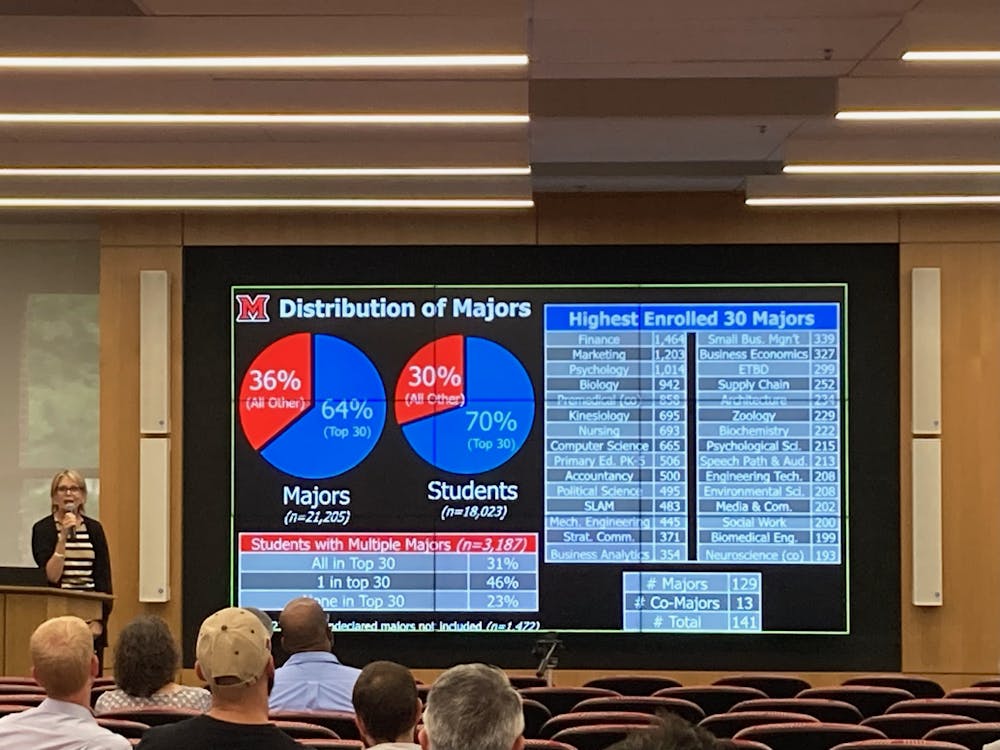Big changes could be coming to Miami University’s academic landscape based on current budgetary problems and enrollment challenges.
On Thursday, Sept. 7, Miami held a faculty assembly discussing multiple issues the university faces, including budgetary problems, a decrease in enrollment and unbalanced numbers of students in majors across campus.
During the assembly, Provost Liz Mullenix said that out of the approximately 18,000 students at the university, 70% are in the same 30 majors out of the 141 offered majors and co-majors. The top five majors alone include more than 5,000 students.
“If so many of our students are in 30 majors but we have 130, how do we adapt to that shift in student demand?” Mullenix said.
At the meeting, Miami President Greg Crawford said the smaller pool of students interested in college is a large contributor to Miami’s budget problems. Americans’ interest in going to college is down 17% from 2018 to 2020, while global interest increased 3.8% from 2021 to 2022.
“Less international students are coming to the United States, and so we’ve lost some market share there,” Crawford said. “There's been more interest in Canada, Australia, New Zealand and the U.K.”
In his presentation, Crawford also said college applications in Ohio are down 12% from 2012 to 2022, and national applications are down 1.9% from 2020 to 2021.

Interest in college is declining nationwide, impacting Miami's enrollment and budget.
Mullenix said Miami’s discount rate and its dependence on tuition combine to create a lower return from each student than Miami would like. The discount rate has increased because public colleges are a highly competitive marketplace.
“Our support from the state of Ohio has not kept up with inflation,” Mullenix said.
Miami’s net tuition is down because of COVID-19, Mullenix said, which led to a decrease in international student enrollment. This, coupled with Ohio’s cap on tuition for public universities, has resulted in a need for a budget cut.
Enjoy what you're reading?
Signup for our newsletter
Mullenix said over the years, the university’s non-academic areas have been reduced twice as much as academic affairs have, and athletic funding comes entirely from student fees. From 2010-2021, academic affairs had a total of $43 million in cuts versus non-academic affairs’ $76.4 million.
Following the presentation, Mullenix said that Miami will continue with its steering committee for the future of the humanities, titled “Humanities Futures,” and report on the findings in the near future.




